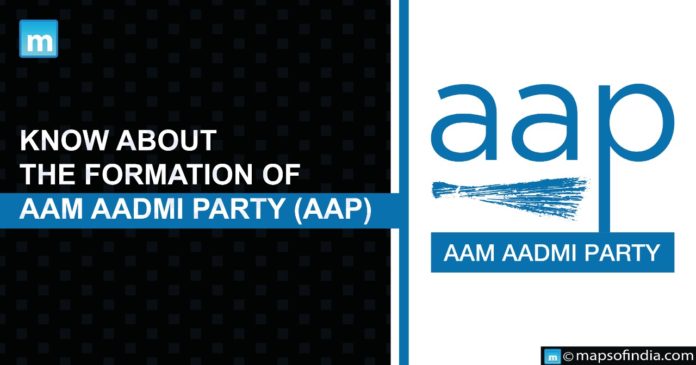A civil society campaign was founded in April 2011 against high-profile corruption scandals that surfaced under the Congress-led UPA administration. An activist party from various backgrounds had gathered to call for the passage of the Jan Lokpal Bill, a piece of legislation that had languished in parliamentary committees for years. The desire for robust legislation that could cope with a fraudulent political system garnered broad appeal among ordinary Indians as public fury against corruption increased with each news media exposé. Indians protested the current administration under the banner of “India Against Corruption,” calling for the rapid passage of the Jan Lokpal.
Over two years, lakhs of individuals organised voluntarily for this cause in hundreds of towns, municipalities, and villages. A movement had started due to protest rallies, political gheros, and social media campaigns. Thousands of people fasted three consecutive times under political activist Anna Hazare’s leadership to increase momentum for the Jan Lokpal Bill and exert pressure on the administration to comply with citizens’ demands. Despite the IAC’s best efforts, the Parliament has yet to approve the Jan Lokpal after the final and third fast.
Because of the pervasive corruption that had destroyed India’s democratic system, the government could not accede to the populace’s demands. A Jan Lokpal adversely harmed the interests of political groups and their members. At that point, a group of IAC activists headed by Arvind Kejriwal concluded that the only way to eradicate corruption from this nation was to enter politics, serve in office, and reform the system from the inside. Thus began the march against corruption in the direction of the Aam Aadmi Party, a political revolution.
Beginning of a mass movement in 2012
The founding of the AAP on October 2, 2012, marked a turning point in Indian politics. It abruptly made it possible for regular people to join political parties after they had seen the downfall of the nation’s politics and government from a distance. Due to admission hurdles, traditional political organisations had become family fiefdoms or communal organisations. However, women and men, old and young, wealthy and poor, were all accepted as common women and commoners in this new political party. Small donations helped the AAP manage the party, making it the first political organisation in India to use the crowd-sourced funding approach for elections.
The AAP made a big entrance with the pledge to eradicate corruption from the structure and present a prototype of alternative politics. The Delhi Assembly election in December 2013 was the first election AAP decided to run in.
Lok Sabha Polls in 2014:
The AAP administration dissolved in February 2014 to obtain a new and complete mandate after being unable to pass the Jan Lokpal Bill in the Delhi Assembly owing to a lack of votes. However, the Lok Sabha polls were slated for April, and May 2014 before the Delhi re-election could be held. AAP ran for four seats out of approximately 400 open ones in Punjab. It had a great start in Punjab, the new state following Delhi, where it won elections, even if the outcome did not meet public expectations for the party.





